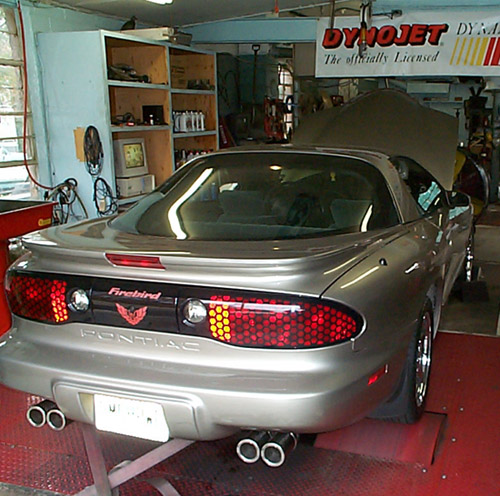

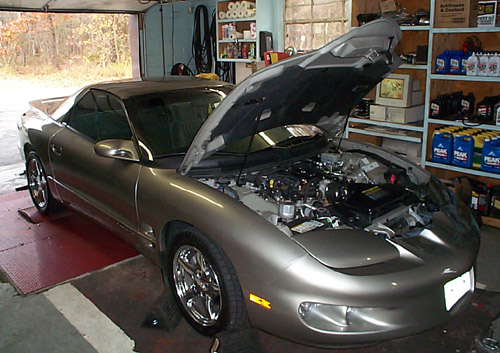
Listen to my stock exhaust. Not bad for
a stock exhaust system, but a little quiet for my tastes.
Now hear my Random Technologies Cat-back exhaust. The new cat-back sounds much deeper than the stock system which it replaces.
I got a B1 cam!!! Listen to my new cam "Gold Jerry. GOLD!!". I have also added headers, intake and y pipe. See the "LS1 Modifications" page for pics and details.
Cartek did a great job of tuning my car. They used a software called "LS1edit" to fine tune the air/fuel ratio, rev-limiter, idle, timing, and various other parameters. This first graph shows the difference the tuning made. Before the tune, it made 375 hp and 355 TQ. After Julio worked his magic, my car made almost 386 hp and 365 TQ. I still have stock heads that have never been off the motor!
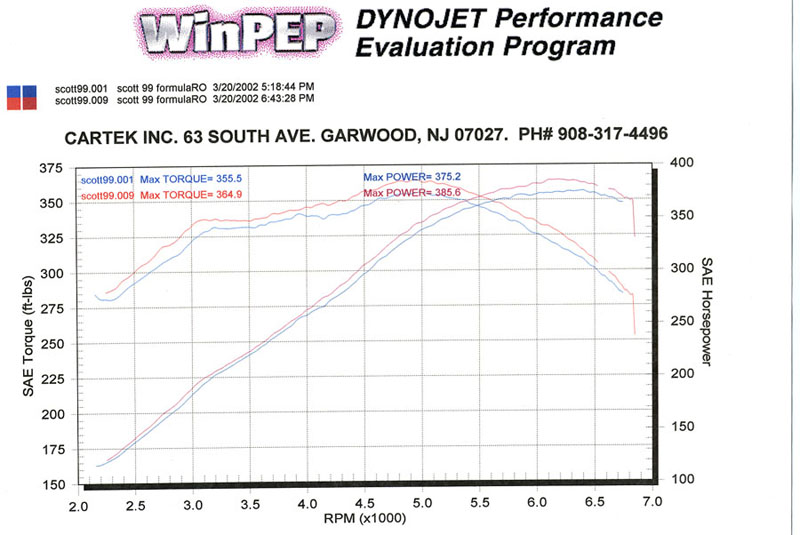
But as the next graph shows, my fuel pump is not keeping up with the new horsepower levels. The bottom part of the following graph shows the fuel pressure dipping to below 50 lbs. That is no good. A new pump will be in there soon, and we'll see if that increases horsepower even more.
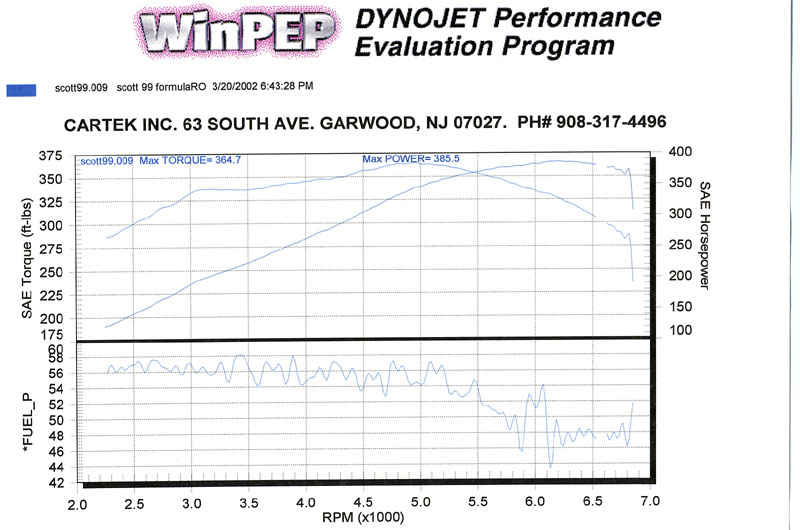
Update: Jay Fisher Pontiac replaced the stock fuel pump and Cartek finished the LS1edit dyno-tuning session. The air/fuel ratio is now in a safe range. An added benefit is an increase of 5 ft-lbs. of torque to 370. Horsepower increased slightly (by 2hp) to 387.5 hp. An interesting side note is that the SAE correction factor was .98 and the actual (uncorrected) peak horsepower was 396 and actual (uncorrected) peak torque was 379. As a matter of fact, the car is now making more power everywhere on the graph when compared to the dyno graph of the bad fuel pump. Below is the SAE corrected dyno graph:
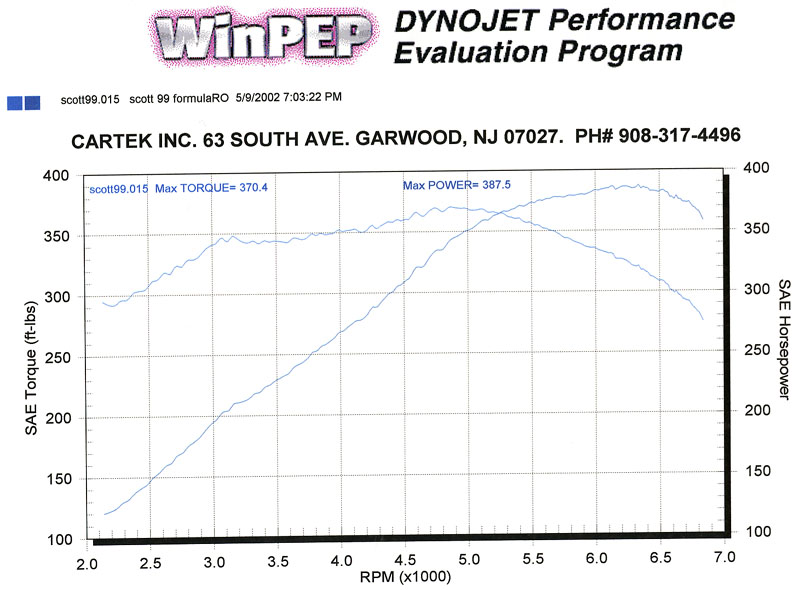
Before the fuel pump change, the car didn't make 350 TQ until 4300 RPM. But with the new fuel pump, the car makes 350 TQ at 3800 RPM. Before the fuel pump change, the car made 350 hp at 5300 RPM. With the new fuel pump, 350 hp is made at 5000 RPM. This benefit will also be reflected in my quarter mile times.
Click here to see some other sweet LS-1 F-bodies and to find links to LS-1 related websites.
Return to the top of the page.